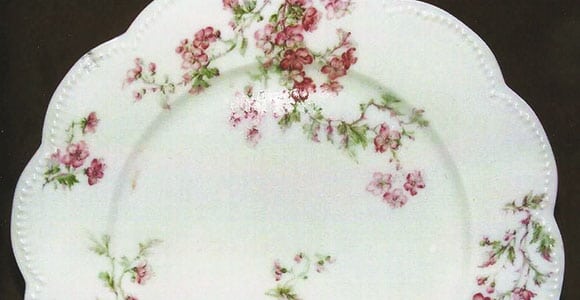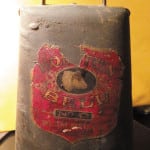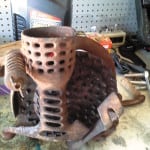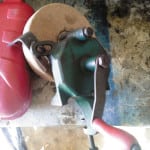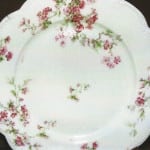I inherited this cowbell from my Aunt Mary. She passed away at 97.
The bell belonged to her in-laws (he was a lawyer in the famous Monkey Trial). She said this bell was used in a parade in Nashville. Not sure what she was talking about. Are you familiar with the parade and the value of this bell?
Your articles in The Tennessee Magazine are very enjoyable and informative.
Thank you,
Gwen, Lebanon
Gwen,
Your Aunt Mary may be referring to the Nashville Gas Christmas Parade, which began in 1952. The Scopes Monkey Trial in Dayton was in 1925. The Holstein cowbells were made in Collinsville, Ind., from 1844 to 1956 from steel. Similar bells, with partial labels still intact, sell for $18 to $35. Cowbells from this company were used by rock bands in the 1970s for the lovely sound made by tapping them with a drumstick.
I have found a couple of items in the attic from years past. What can you tell me about both items? We love your column in The Tennessee Magazine. The first piece is a corn or meat grinder. Second is a blade/knife sharpener. Both have all of the original parts.
Ralph, McMinnville
Ralph,
The iron piece with the cone-shaped basket is a corn-sheller and sells for between $25 and $50. Grinding wheels like yours are usually a bit more — $45 to $100. I often find wheels still attached to a gentleman’s work bench. Corn-shellers, unfortunately, are more often discovered by my feet!
I have tried to identify through the Internet the china pattern that belonged to my grandmother and great-grandmother and have not been successful. If you can give me a name of the pattern or how to go about locating it, my family and I would be very grateful. If not, I continue to thank you for those people you are able to help.
Ann, Tennessee Ridge
Dear Ann,
Early Haviland dinnerware did not have pattern names. The company employed artists to create the dainty floral patterns. In the summer they worked with a view of gardens in France (nice job) to inspire them. I’ve read that they worked from memory in the winter months, often painting imagined but not necessarily accurate sprigs of flowers.
Arlene Schleiger cataloged 200 of the most popular early patterns and slips (blank pieces) in a monumental five-book project in 1950. People who work to replace pieces for clients use her numbers. Currently, serving pieces might sell for $18 for a creamer to well more than $100 for a covered vegetable or large platter, but place-setting pieces often bring less than $10 each at estate sales. Replacement value would take into account the work performed by an agent or replacement service to secure similar pieces.
The Austrian dinnerware with pink flowers will have similar values. It was made by Altrohlau in Austria, circa 1890.
Thank you ALL for the lovely compliments.



